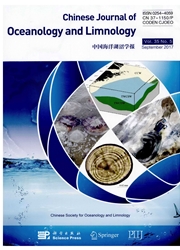

 中文摘要:
中文摘要:
An experiment was performed to determine the dietary phosphorus requirement of the young abalone, Haliotis discus hannai. Five semi-purified diets were formulated to provide a series of graded levels of dietary total phosphorus (0.23%-1.98) from monobasic potassium phosphate (KH2PO4). The brown alga, Laminaria japonica, was used as a control diet. Similar size abalone were distributed in a single-pass, flow-through system using a completely randomized design with six treatments and three replicates each treatment. The abalone were hand-fed to satiation with appropriate diets in excess, once daily at 17:00. The feeding trial was run for 120-d. Survival rate and soft-body to shell ratio (SB/S) were constantly maintained regardless of dietary treatment. However, the weight gain rate (WGR), daily increment in shell length (DISL), muscle RNA to DNA ratio (RNA/DNA), carcass levels of lipid and protein, soft-body alkaline phosphatase (SBAKP), and phosphorus concentrations of whole body (WB) and soft body (SB) were significantly (ANOVA, P<0.05) affected by the dietary phosphorus level. The dietary phosphorus requirements of the abalone were evaluated from the WGR, DISL, and RNA/DNA ratio respectively, by using second-order polynomial regression analysis. Based on these criteria, about 1.0%-1.2% total dietary phosphorus, i.e. 0.9%-1.1% dietary available phosphorus is recommended for the maximum growth of the abalone.
 同期刊论文项目
同期刊论文项目
 同项目期刊论文
同项目期刊论文
 期刊信息
期刊信息
